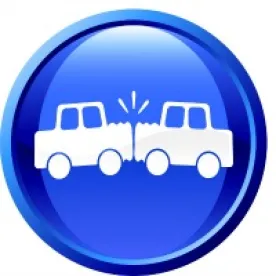One moment you are sitting at a stoplight or at the end of a highway exit ramp, and the next thing you know, you see another vehicle careening towards you in your rear-view mirror. Or, worse yet, a vehicle rams into you out of nowhere, with no notice and no opportunity to avoid it. Rear-end accidents are terrifying, and they frequently result in serious, life-changing injuries that can have a significant impact on accident victims and their families.
Rear-End Accident Statistics
Rear-end accidents are among the most common types of car accidents. They are also very dangerous. These accidents occur most often while one vehicle is stationary and the other is moving at high speed. Due to the nature of these crashes, accident victims rarely have the opportunity to make any evasive maneuvers or brace themselves for the impact.
According to one study, rear-end collisions account for about 29 percent of all traffic accidents resulting in serious injury. Statistics provided by the Insurance Information Institute indicate that rear-end collisions are responsible for over seven percent of all traffic-related fatalities and nearly 20 percent of those fatalities involving two-vehicle collisions.
Like many other types of Pennsylvania car accidents, a rear-end collision is often the result of driver negligence. In most cases, the driver who rear-ended the other car is the responsible party. However, that is not always the case.
Determining Fault in Rear-End Accidents 
All drivers owe others on the road a duty of care to safely operate their car. While the exact nature of a motorist’s duty varies, depending on traffic and weather conditions, the basic principle is that they must follow all traffic laws and exercise sound judgment while behind the wheel. When looking at how most rear-end accidents occur, it is no surprise that, in most cases, the driver who rear-ends the other vehicle is at fault. For example, below are four common scenarios:
-
A driver slams into another car on the highway that is slowing down for upcoming traffic;
-
A driver fails to notice that another car has its turn signal on and crashes into the car as it slows down to turn;
-
A driver plans on speeding through a changing traffic signal and does not anticipate that the car ahead of them will stop; or
-
A driver assumes the car in front of them will start to drive as soon as the light turns green and accelerates into the back of the vehicle.
In each of these situations, the driver coming from behind is likely the one who is at fault. However, there are some scenarios where both drivers may share the blame for a rear-end accident.
For instance, consider the following examples:
-
The leading driver suddenly slams on the brakes for no apparent reason;
-
The leading driver places their vehicle in reverse while in a traffic lane;
-
The leading driver’s vehicle’s brake lights do not work; or
-
The leading driver fails to use a turn signal when slowing down to make a turn.
In each of these cases, it isn’t that the rear-ending driver is not at all responsible, but that the leading driver may share responsibility for the accident. This can have a major impact when it comes to a subsequent personal injury case filed by the accident victim.
Comparative Fault in Pennsylvania Rear-End Accidents
As indicated above, some rear-end accidents are solely the fault of the rear-ending driver. In these cases, the accident victim can file a personal injury case against the other driver, seeking compensation for their injuries.
In situations involving shared responsibility, the accident victim will still be permitted to file a claim against the other driver. However, the total amount of damages they can recover will be reduced by their percentage of fault. For example, assume that John rear-ended Terry and that John was 70 percent at fault and Terry 30 percent at fault. If Terry’s damages were $200,000, then he would recover a total of $140,000, which is the amount of his total damages, less 30 percent.




 />i
/>i

